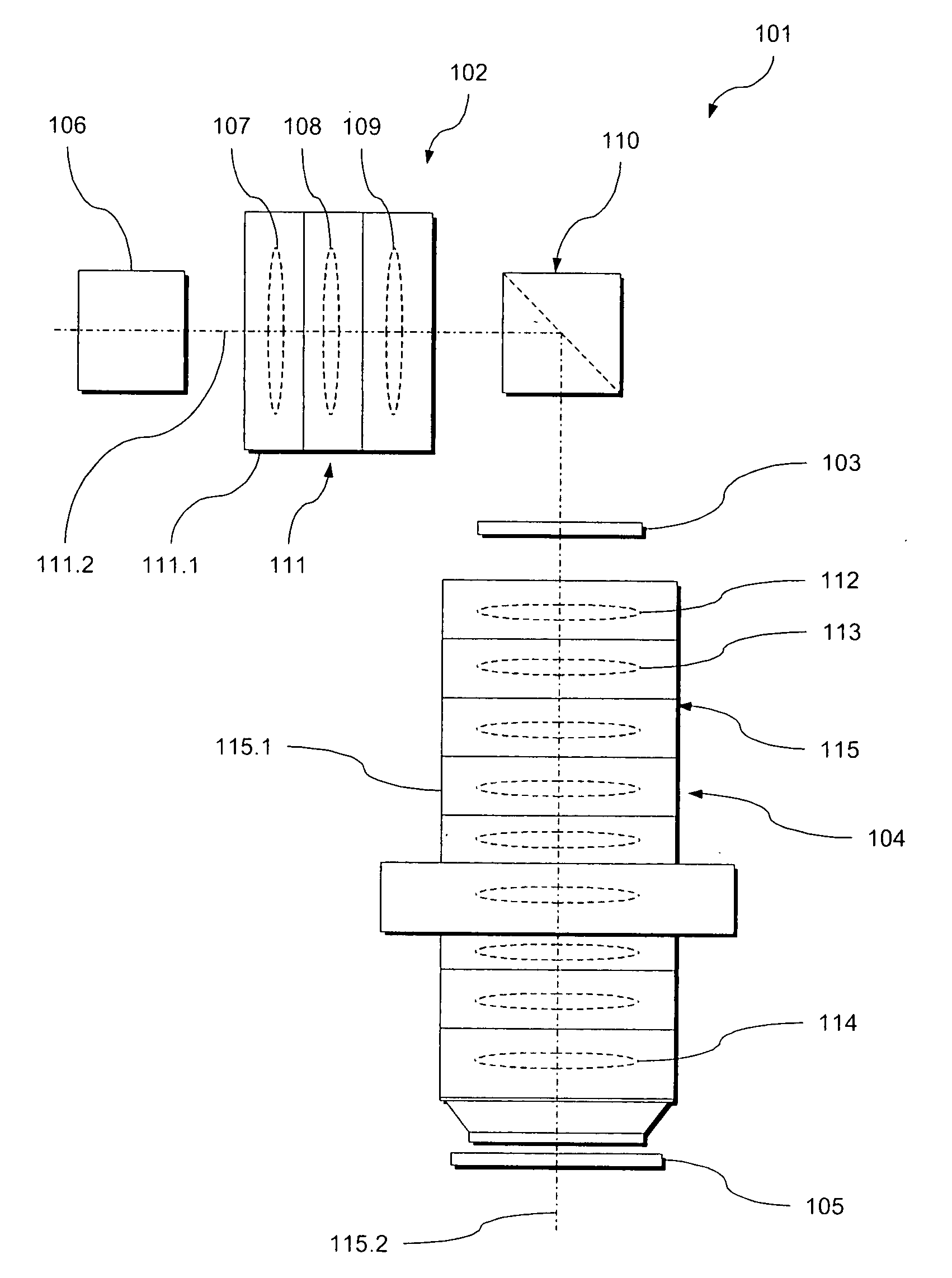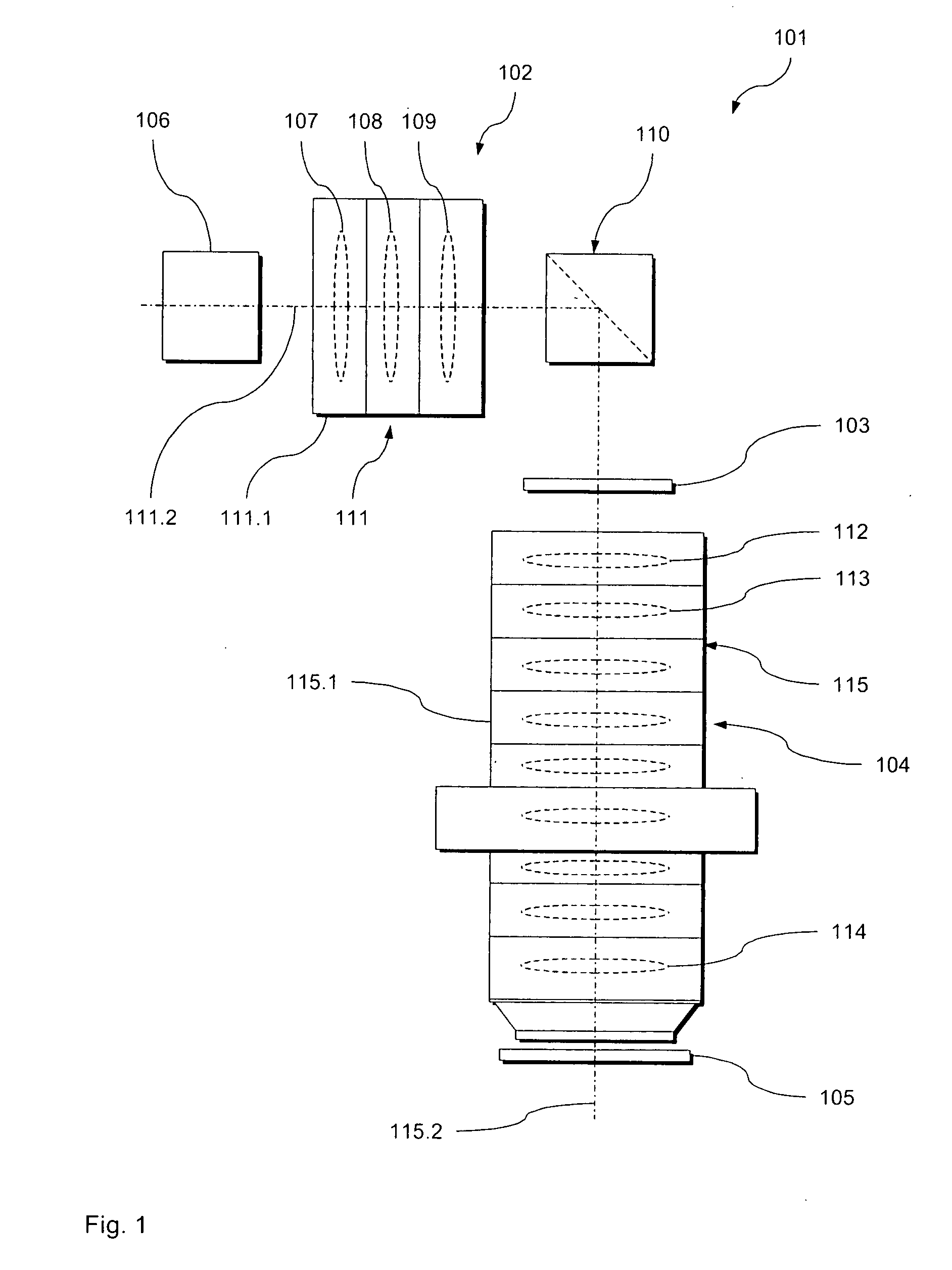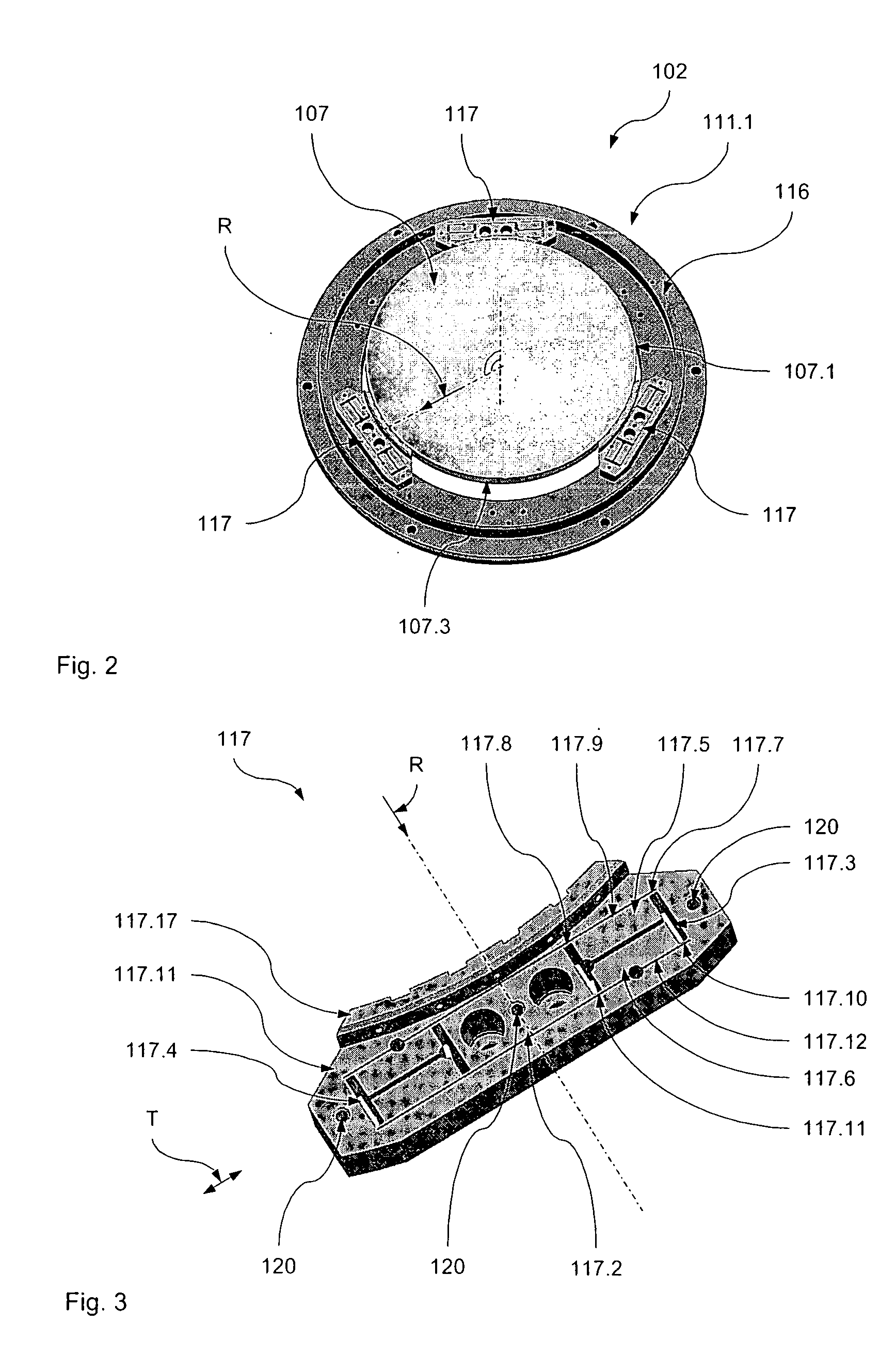Optical element unit and method of supporting an optical element
a technology of optical elements and optical elements, applied in the field of optical element units, can solve the problems of introducing considerable stresses into the optical elements, no further correction or adjustment of the position of the lens relative to the holder is possible at reasonable small effort, and achieves good and long-term stable and reliable imaging properties of the optical system
- Summary
- Abstract
- Description
- Claims
- Application Information
AI Technical Summary
Benefits of technology
Problems solved by technology
Method used
Image
Examples
first embodiment
[0044]In the following, a first preferred embodiment of an optical exposure apparatus 101 according to the invention comprising an illumination system 102, a mask 103, an optical projection system 104 and a substrate 105 will be described with reference to FIGS. 1 to 6.
[0045]The optical exposure apparatus 101 is adapted to transfer an image of a pattern formed on the mask 103 onto the substrate 105. To this end, the illumination system 102 illuminates the mask 103 with exposure light. The optical projection system 104 projects the image of the pattern formed on the mask 103 onto the substrate 105, e.g. a wafer or the like.
[0046]To this end, the illumination system 102 comprises a light source 106 and a plurality of optical elements 107 to 110, such as lenses, mirrors, gratings or the like. The optical elements 107 to 109 are held within a first housing 111.1 of a first optical element unit 111 according to the invention. The optical elements 107 to 110 cooperate to define the beam o...
second embodiment
[0078]In the following, a second preferred embodiment of an optical element unit according to the invention in the form of the second optical element unit 115 will be described with reference to FIGS. 1 and 8.
[0079]FIG. 8 shows a schematic partial view of the second optical element unit 115 from above along the second optical element unit axis 115.2. More specifically, FIG. 8 shows a schematic view of a first optical element in the form of lens 112 with its first connector elements 129 mounted to a first holder 130 and a second optical element in the form of lens 113 with its second connector elements 131 mounted to a second holder 132.
[0080]The first connector elements 129 and the second connector elements 131 correspond to the connector elements 117 such that, with respect to their design and functionality, it is here only referred to the explanations given above with respect to the connector elements 117. Furthermore, the first holder 130 and the second holder 132 correspond to t...
third embodiment
[0085]In the following, a third preferred embodiment of an optical element unit according to the invention in the form of an optical element unit 211 will be described with reference to FIGS. 1 and 9. The optical element unit 211 may replace the optical element unit 111 in the optical exposure apparatus 101 of FIG. 1. The optical element unit 211, in its basic design and functionality, largely corresponds to the optical element unit 111 such that it will here be mainly referred to the differences. In particular, like parts have been given the same reference numerals raised by the amount 100.
[0086]FIG. 9 shows a schematic partial sectional view (corresponding to a section along line IX-IX of FIG. 3) of the connector element 217 of the optical element unit 211. The only difference of the connector element 217 with respect to the connector element 117 of the optical element unit 111 lies within the design of the contact part 217.17 of the first connector part 217.1.
[0087]The first conn...
PUM
 Login to View More
Login to View More Abstract
Description
Claims
Application Information
 Login to View More
Login to View More - R&D
- Intellectual Property
- Life Sciences
- Materials
- Tech Scout
- Unparalleled Data Quality
- Higher Quality Content
- 60% Fewer Hallucinations
Browse by: Latest US Patents, China's latest patents, Technical Efficacy Thesaurus, Application Domain, Technology Topic, Popular Technical Reports.
© 2025 PatSnap. All rights reserved.Legal|Privacy policy|Modern Slavery Act Transparency Statement|Sitemap|About US| Contact US: help@patsnap.com



